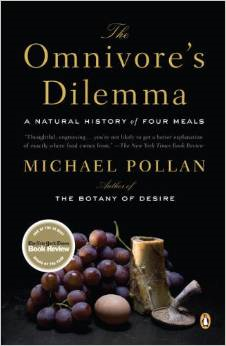The Omnivore's Dilemma: 3 Challenges of the Industrialized Life
The Omnivore's Dilemma: 3 Challenges of the Industrialized Life

I’m reading The Omnivore’s Dilemma a wonderful book on the industrialization of the food industry over the last 100 years. It is clear the food industry faces challenges that are eerily similar to those of our current housing market. For housing, it is plagued by McMansions, sprawl, and poor quality; in the food industry, it struggles with large portions, obesity, and fast food.
The best example of the success (and failure) of modern food production is the Twinkie. The hostess wonder and star of many movies (including Woody Harrelson’s elusive treasure in Zombieland), the Twinkie has a similar background to our houses because it was originally made from real ingredients but has devolved into a plastic copy.
The Twinkie, according to Wikipedia, was once “real”, in that it was made from flour, eggs, sugar, and even real bananas for its filling. Although not completely changed (in that there is still flour and eggs as part of the recipe) today the Twinkie is filled with more additive then honest ingredients. Many of the original ingredients have been replaced by scientific equivalents to improve its shelf life and keep its price down. Our industrialized culture has changed the Twinkie as well as our homes. It’s no wonder we have cookie-cutter homes the come from the same mold.
Below are just 3 of many similar challenges that we must resist if we hope to build Timeless Houses.
1. Speed
Author Michael Pollan seeks to track the path of corn, from where it’s grown in Iowa all the way to the products on our pantry shelves. He discovers that much of our corn is feed to cows because corn fattens the cows faster than any other grain. In fact the speed at which we fatten cows has changed dramatically in the last 100 years. In the 1920’s it would take 4-6 years before a cow was sent to a slaughter-house. Today it is 14-16 months.
Speed also influences and overwhelms the homebuilding industry. From the builders who seek to “turn-their-inventory” as fast as possible to the trees that are grown on massive plantations around the world. Compare old growth lumber: its stability, longevity and beauty to new lumber which is not stable, rots quickly and is filled with knots. Although speed may improve the bottom-line, there are costs that we need to consider. Our houses are built faster but they don’t last longer. . .
2: Quantity over Quality
Pollan also points out that the anonymity of today’s farms and growers stands in contrast to old farms that proudly printed their name and label on burlap sacks or crates. When all that is advertised from the grocery store is, “Tomatoes $1.09/lb”. It sends a clear signal to the farmer that price is all that matters.
Builders today, are also harried by the price tag and naturally race to build as much home as possible for the least amount of money. When I talk to many builders about the ideas in this book, they tell me that all customers care about is price. We are sacrificing quality when we cram in extra square footage. We need to realize the message we are giving the industry when we chase price.
3. Self-Reliance
Another resounding insight in his book, (and there are more than I’m listing here) is that the typical farmer today in Iowa grows either corn or soy beans. In the early 20th century a typical farm in Iowa grew many different plants (oats, hay, wheat), raised animals and was more self-sufficient. The farm in the early 1900’s could support itself, as well as provide for other Americans. Today these farmers are no longer self-sufficient.
The clear similarity is with today’s builders who don’t know how to build. They know how to manage the project, schedule and budget but as far as putting hammer to nail, they are ignorant. Most builders don’t know a framing square from four-square. The irony of a builder who can’t build is pretty crazy. The bottom-line is that we are certainly not as self-reliant as we once were.
Michael Pollan points out that with food, “You are what you eat”. I would add that with our homes, we are what we build. The homes we build reveal a lot about who we are. There is a clear narrative that needs careful consideration. If we don’t watch out, this industrialized world will run us over. The homes we build reveal a lot about who we are. There is a clear narrative that needs careful consideration. If we don’t watch out, this industrialized world will run us over.
-B

